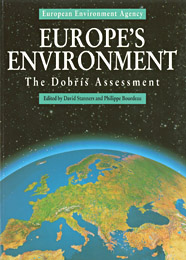All official European Union website addresses are in the europa.eu domain.
See all EU institutions and bodiesAn official website of the European Union | How do you know?
Environmental information systems
State of the environment report 3/1995
Europe's environment: The Dobris Assessment - An overview
Report (PDF)

Europe's environment: The Dobris Assessment - An overview
State of the environment report 3/1995
12 Dec 1995
ISBN: 92-827-5122-8
